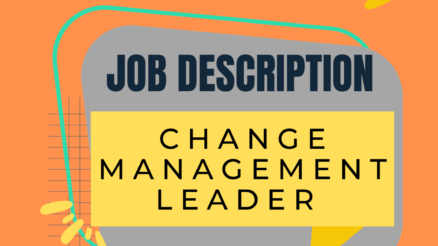If you’re a business leader looking to elevate your organization in an ever-changing business landscape, or a professional aspiring to ascend the corporate ladder then staying informed about the latest trends in organizational change is essential.
Recent studies indicate that over 70% of organizations globally have reported undergoing significant changes in their operational models in the past year alone.
This highlights a universal shift towards innovative practices.
This blog post explains the emerging trends that are reshaping how organizations operate, from the rise of remote and hybrid work environments to a renewed focus on employee well-being and mental health.
Let’s check it out in detail.
What is organizational change?
Organizational change refers to the process through which a company or any kind of organization undergoes a transition to adjust or improve its operations, structures, strategies, or culture.
This change can be driven by various factors, including technological advancements, market trends, internal challenges, regulatory changes, or the need to enhance performance and competitiveness.
The nature of organizational change can be wide-ranging, from small-scale adjustments in day-to-day operations to major transformations in business models or organizational culture.
Key aspects of organizational change include:
Strategic Changes: Altering the organization’s mission, vision, or overall strategy to align with new objectives or market demands.
Structural Changes: Modifying the organizational structure, such as the hierarchy, role definitions, or departmental configurations, to improve efficiency or adapt to new challenges.
Process Changes: Streamlining or changing business processes and workflows to enhance performance, quality, or customer satisfaction.
Technological Changes: Implementing new technologies or upgrading existing ones to improve productivity and adapt to the digital age.
Cultural Changes: Shifting the organizational culture, values, and behaviors to foster a more positive, inclusive, or innovative work environment.
People Changes: Adjustments related to the workforce, including training, development, hiring practices, and layoffs or restructuring.
Organizational change is often challenging as it requires managing the resistance from employees, ensuring clear communication, and maintaining operational continuity during the transition.
Successful change management involves careful planning, clear communication, employee involvement, and ongoing evaluation to ensure that the changes achieve the desired outcomes and are sustainably integrated into the organization.
Read more about: Top 10 Change Management Trends 2024
New Trend in Organizational Change
The future of organizational change seems to be guided by the principles of flexibility, inclusivity, and sustainability, alongside the continued integration of advanced technologies.
Here are the new trends in organizational change that indicate a significant shift in the way organizations operate in the future.
Trend # 1: The Rise of Remote and Hybrid Work Models
After COVID 19 Pandemic, one of the most significant trends emerged in organizations has been the widespread acceptance and adoption remote and hybrid work models.
Prior to the pandemic, remote work was often seen as a perk or a niche arrangement, but it has since evolved into a mainstream working model.
This shift is driven by advancements in technology that facilitate communication and collaboration across distances. This trend allows businesses to maintain productivity and even expand their talent pool beyond geographical constraints.
These models offer several benefits, including increased employee satisfaction, reduced overhead costs, and a greater emphasis on work-life balance.
However, they also present challenges in terms of maintaining company culture, ensuring equitable experiences for all employees, and managing remote teams effectively.
Trend # 2: Increased Focus on Employee Well-being and Mental Health
The trend of placing increased focus on employee well-being and mental health represents a significant shift in organizational priorities.
In recent years, there’s been a growing recognition that the mental health and overall well-being of employees are not just personal issues, but critical factors affecting productivity, engagement, and the overall success of an organization.
This change in perspective has been partly driven by a broader societal acknowledgment of the importance of mental health, as well as by research linking employee well-being to improved business outcomes.
Organizations are now actively implementing strategies to support the mental health and well-being of their workforce.
These include offering access to mental health resources, such as counseling services and stress management programs, creating more flexible work arrangements to improve work-life balance, and fostering a workplace culture that encourages open discussions about mental health.
Read more about: Mental Health and Wellness Programs in the Workplace
Trend # 3: Leveraging Artificial Intelligence and Automation
Nowadays artificial intelligence and automation is one of the most powerful trends in organizational change.
AI and automation technologies are being integrated into various aspects of business operations.
Business organizations are developing customer service with AI-powered chatbots and advanced data analytics is being used for informed decision-making. AI also enables predictive analytics, helping organizations anticipate market trends and customer needs
AI and automation not only enhances productivity and reduces likelihood of human error but it also frees up human resources for more complex and creative work.
While this shift towards AI and automation presents challenges, including workforce re-skilling and ethical considerations.
Read more about: The Future of Artificial Intelligence in the Workplace – Top 5 Trends
Trend # 4: Emphasis on Diversity, Equity, and Inclusion (DEI)
The increasing emphasis on Diversity, Equity, and Inclusion (DEI) in organizations represents a profound and necessary shift in the corporate world.
Recognizing the varied experiences and backgrounds of employees, companies are actively working to create environments where everyone feels valued and empowered.
This involves intentional strategies to ensure diverse representation at all levels, equitable access to opportunities and resources, and an inclusive culture where different perspectives are respected and celebrated.
The push for DEI is not just a moral imperative but is also driven by a growing understanding that diverse and inclusive organizations are more innovative, resilient, and successful.
A diverse workforce brings a range of perspectives, leading to more creative problem-solving and decision-making.
Inclusion initiatives help in retaining talent and enhancing employee engagement, as people are more likely to feel committed to an organization where they feel understood and appreciated.
Read more about: Benefits and Challenges of Workplace Diversity
Trend # 5: Agile and Flexible Organizational Structures
Organizational structures have undergone a transformation. Nowadays agile and flexible models are becoming increasingly popular.
This new approach moves away from traditional hierarchical and rigid organizational models. Why? Because alive and flexible organizational structures are more responsive, adaptable, and collaborative.
Agile organizations are characterized by their ability to quickly pivot in response to market changes, customer needs, and emerging technologies.
They often employ cross-functional teams, decentralized decision-making, and a project-based approach, allowing for rapid iteration and innovation.
Flexibility in these structures is not just about organizational design but also extends to work practices. It includes offering employees flexible working hours, remote work options, and the freedom to choose how they accomplish their tasks.
This approach empowers employees, giving them a sense of ownership and involvement in the company’s success.
This trend is particularly appealing in industries that are constantly evolving or where customer demands are swiftly changing.
Read more about: What is Agile Organizational Structure? Its Types and Challenges
Trend # 6: Sustainability and Corporate Social Responsibility
The trend towards prioritizing sustainability and corporate social responsibility (CSR) reflects an evolution in how organizations perceive their role in society.
This shift is driven by a growing awareness of environmental issues, ethical considerations, and a broader understanding of stakeholder interests beyond just shareholders.
Sustainability in this context refers to adopting business practices that are environmentally sound, economically viable, and socially responsible.
Organizations are increasingly integrating sustainable practices into their operations, such as reducing carbon footprints, using renewable energy sources, and ensuring sustainable supply chains.
These efforts are aimed not only at minimizing negative impacts on the environment but also at creating positive social value.
Corporate social responsibility, on the other hand, involves companies taking responsibility for their effects on societal welfare and the environment.
This includes initiatives like community engagement, philanthropy, ethical labor practices, and corporate governance that upholds transparency and accountability.
The trend towards sustainability and CSR is not just a response to regulatory pressures or a marketing strategy; it’s becoming a core component of corporate identity and long-term business strategy.
Companies are recognizing that sustainable and responsible practices can drive innovation, open up new markets, and build brand loyalty among consumers who are increasingly conscious of these issues.
Furthermore, it enhances employee morale, as people prefer to work for organizations that align with their values.
Trend 7: Culture of Continuous Learning and Development
In an era of technological advancements, the ability of a workforce to adapt and grow continuously is not just an asset, but a necessity.
This trend involves creating an environment where learning is an ongoing process, and employees are encouraged and enabled to acquire new skills and knowledge constantly.
It’s about moving beyond traditional, episodic training programs to a more holistic, continuous approach.
This could involve a variety of initiatives, such as providing access to online learning platforms, facilitating mentorship programs, encouraging attendance at conferences and workshops, and supporting further education and certifications.
The benefits of a culture of continuous learning and development are manifold. For the organization, it ensures that the workforce remains skilled and up-to-date, fostering innovation and maintaining competitive advantage.
For employees, it offers personal and professional growth opportunities, leading to higher job satisfaction and engagement.
By investing in the ongoing development of their employees, organizations are not only preparing their workforce for the challenges of today but also equipping them to drive the business forward in the future.
Read more about: Change Management and Continuous Improvement – Connection and Benefits
Trend # 8: Data Driven Decision Making
The trend of data-driven decision-making represents a significant shift in organizational strategies and practices.
Business leaders are now moving away from intuition-based or experience-based decisions to those grounded in empirical evidence.
In today’s digital age, where vast amounts of data are generated every moment, organizations are increasingly leveraging this data to inform and guide their strategic and operational decisions.
Data-driven decision-making involves collecting, analyzing, and interpreting large datasets to uncover valuable insights that can drive business strategies.
This approve is being applied in various domains, from marketing and customer service to product development and human resources.
Key components of this trend include the use of advanced analytics tools, machine learning algorithms, and business intelligence software that can process and analyze data in real-time, providing actionable insights.
This shift not only helps in identifying new opportunities, understanding customer behavior, and predicting market trends but also aids in identifying inefficiencies and risk management.
Trend # 9: Holacracy Structure
The adoption of Holacracy as a structural approach represents new trends in organizational change.
Holacracy is a method of decentralized management and organizational governance, where authority and decision-making are distributed throughout self-organizing teams rather than being centralized at the top of a management hierarchy.
In a Holacratic system, roles are defined around the work that needs to be done rather than job titles, and employees can have multiple roles across various teams.
This structure is designed to foster transparency, agility, and rapid innovation. Decisions are made locally by team members who are closest to the subject, rather than by managers or executives.
This approach encourages autonomy and empowers employees, giving them more control over their work and the way decisions are made.
One of the key components of Holacracy is regular, structured meetings that help in aligning team members and in the governance of the organization.
However, it also presents challenges, such as the need for significant cultural change, training for employees to adapt to new roles and responsibilities, and the potential for confusion in the absence of traditional management structures.
While not suitable for all organizations, the trend towards Holacracy highlights a growing interest in more dynamic, flexible, and innovative organizational models, especially in industries where rapid change and adaptability are crucial.
Trend # 10: Use of Augmented Reality and Virtual Reality
The integration of Augmented Reality (AR) and Virtual Reality (VR) technologies is a burgeoning trend in organizational change.
These immersive technologies are moving beyond their initial entertainment and gaming applications to become powerful tools in the corporate world.
AR and VR offer unique opportunities for enhancing and transforming business processes.
For instance, in training and development, VR can simulate real-world scenarios in a controlled environment, allowing employees to gain hands-on experience without the risks associated with on-the-job training.
This is particularly valuable in sectors like healthcare, aviation, and manufacturing, where practical experience is crucial.
In terms of customer engagement and marketing, AR provides interactive and engaging ways for customers to experience products or services.
Retailers, for example, use AR to allow customers to visualize products in their own homes before making a purchase, enhancing customer experience and satisfaction.
Virtual meeting rooms and collaborative spaces allow for a more immersive and interactive experience than traditional video conferencing, making remote work more efficient and engaging.
Final Words
As we navigate through these new trends in organizational change, it’s clear that the landscape of the modern workplace is undergoing a profound transformation. From the adoption of remote and hybrid work models, increased emphasis on employee well-being, to the innovative use of technologies like AI, AR, and VR, organizations are redefining how they operate, interact, and grow. While each trend presents its own set of challenges and opportunities, together they paint a picture of a future where organizations are more agile, employee-centric, and technologically advanced.



